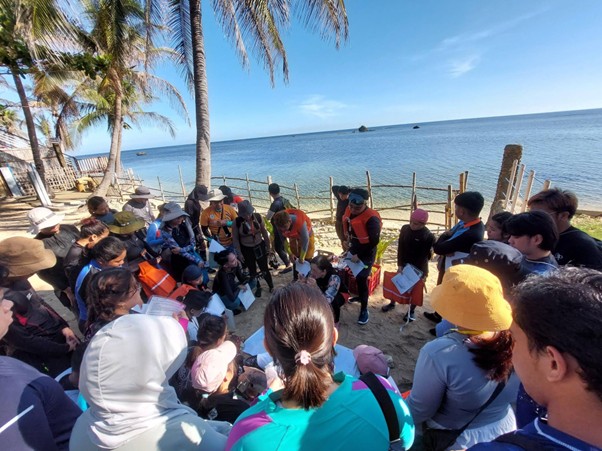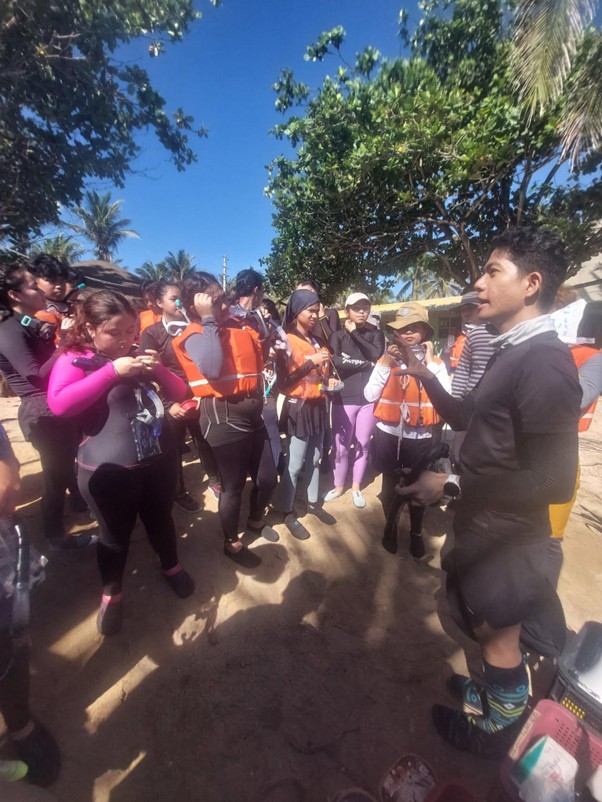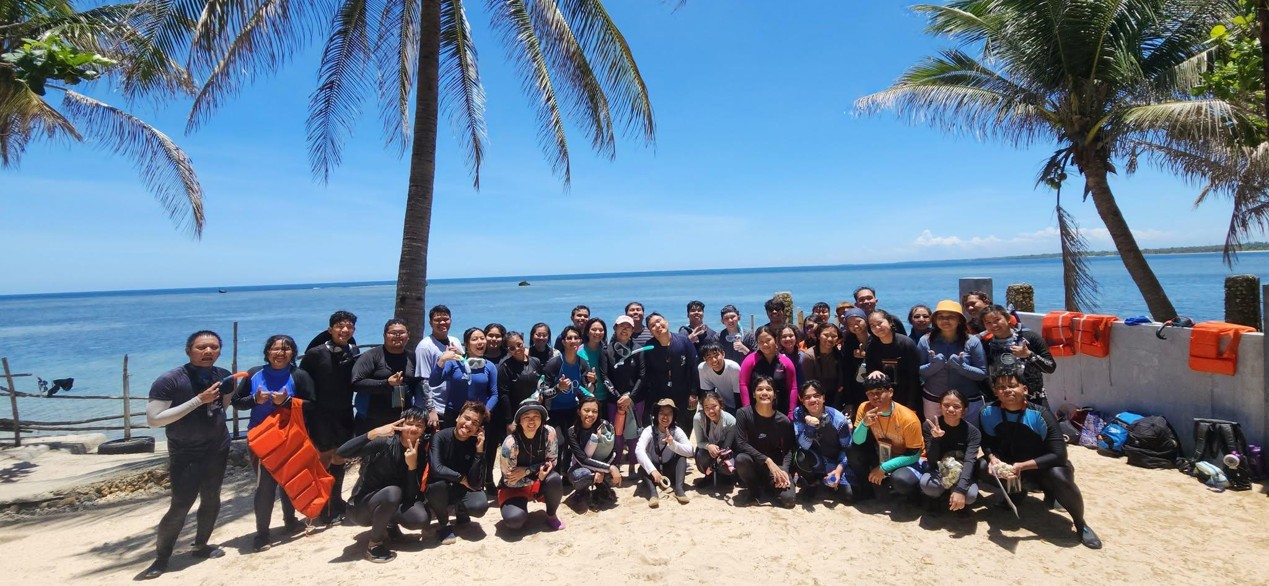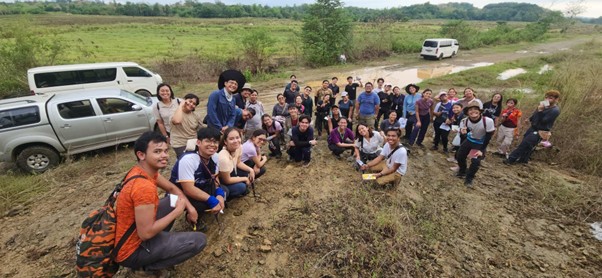On May 9th to 11th of this year, the Geology 135 class consisting of 35 BS Geology students and 8 faculty and staff went on a fieldwork in La Union and Pangasinan. This time, new outcrops in Pangasinan were visited to further expose the students to sedimentary rocks formed in different environments based on sedimentological and fossil assemblage differences. The expedition was supervised by Professor Alyssa M. Peleo-Alampay, with assistance from instructors Mr. Meyrick Tablizo and Mr. Joaquin Lacson, teaching associates Mr. David Policarpio and Mr. Justin Jorge Padre, and three MS Geology students.
This yearly fieldwork is an essential component of the BS Geology program since it provides them their only exposure to modern carbonate environments which are common in the Philippines and have been a major part of its geologic history. During the fieldwork, the students looked at the exposed rock layers and took note of distinct lithological characteristics and fossil assemblages. They also examined various living analogs of previously observed fossils, providing them with a glimpse of how they could have lived and behaved when they were still alive.
 Students listening to Dr. Peleo-Alampay about an
introduction of modern carbonate environments (reef).
Students listening to Dr. Peleo-Alampay about an
introduction of modern carbonate environments (reef).
 Students listening to Mr. Lacson about tips and
important things to know when swimming and snorkeling in the reef.
Students listening to Mr. Lacson about tips and
important things to know when swimming and snorkeling in the reef.
 Class photo of the faculty and students after swimming
in the reef.
Class photo of the faculty and students after swimming
in the reef.

Class photo of the faculty and students in one of the
new outcrops.